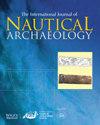海岸遗址的“两栖”挖掘:萨拉米斯(希腊)安贝拉基围堰的使用
IF 0.6
3区 历史学
0 ARCHAEOLOGY
International Journal of Nautical Archaeology
Pub Date : 2023-01-02
DOI:10.1080/10572414.2023.2191243
引用次数: 0
摘要
自2016年以来,在名誉教授Yannos G. Lolos和Angeliki G. Simossi博士的指导下,希腊海洋考古研究所(HIMA)和希腊文化和体育部水下文物管理局(EUA)之间的联合跨学科研究项目每年都在萨拉米斯岛(希腊)东海岸的Ambelaki-Kynosoura地区继续进行。本文概述了一种新的应用方法,用于有效调查古典到罗马时期萨拉米斯镇的水下建筑遗迹,如现代历史学家(Lolos & Marabea, 2020)所断言的那样,在浅水中,在更广泛的区域,在公元前480年海战前夕,希腊盟军舰队聚集在这里,并且在当今严重污染的环境中。这是过去几年在该地区的每个人都经历过的情况。在我们挖掘的所有地区,海底的沙子都是黑色的。尽管希腊海岸上有许多这样的水下遗址,并且在其他国家也应用了围堰挖掘技术,但在希腊挖掘浅水水下遗骸的传统并不长:例如,约克镇的英国船只(Broadwater, 1992),丹麦Skuldelev的维京船只(Olsen & crumin - pedersen, 1968,第79页,图3),美国德克萨斯州马塔戈尔达湾的La Belle (Menotti, 2012,第217-219页;Viduka, 2012, pp. 8-9,并附有进一步参考文献)。这种情况可能是由于这种挖掘的性质,即在陆地和海洋之间的边缘,陆地和水下挖掘的方法必须结合起来。除了许多调查,挖掘在浅水域淹没仍然使用水下考古的方法和技术都是在希腊进行的,例如,在Abdera,色雷斯(Samiou, 1993),在西海岸Metochi Pagasetikos南部海湾,深度0 - 2.5 (Spondylis &米,2018,p . 79),在伯罗奔尼撒半岛西部的Kyllene,深度的主/ m (Pakkanen et al ., 2018),在拉科尼亚南部Pavlopetri深度1 - 4米(亨德森et al ., 2011年,p . 208),在Argolid南部的Lambayianna,深度为1-3米(Koilada Bay 2017研究项目)。此外,一个清澈的水围护系统(所谓的“Pochin围护系统”)已被应用于比雷埃夫斯Zea浅水淹没遗体的调查(lov本文章由计算机程序翻译,如有差异,请以英文原文为准。
‘Amphibious’ Excavation at Coastal Sites: The Use of a Cofferdam at Ambelaki, Salamis (Greece)
Since 2016 a joint interdisciplinary research project between the Hellenic Institute of Marine Archaeology (HIMA) and the Ephorate of Underwater Antiquities of the Hellenic Ministry of Culture and Sports (EUA) has been continuing annually in the area of Ambelaki-Kynosoura, on the east coast of the island of Salamis (Greece), under the direction of Emeritus Professor Yannos G. Lolos and Dr Angeliki G. Simossi. The present paper outlines a newly applied methodology for the efficient investigation of submerged architectural remains of the Classical to Roman-Period town of Salamis, in shallow water, in the wider area where the allied Greek fleet assembled on the eve of the naval battle in 480 BC, as asserted bymodern historians (Lolos & Marabea, 2020) and in a present-day heavily polluted environment. This is a situation experienced by everybody who has been in the area over the past years. In all areas of our excavation the sand of the seabed is black. The excavation of submerged remains in shallow water does not have a long tradition in Greece, despite the existence of many such submerged sites along the Greek coasts and the application of the cofferdam excavation technique in other countries: e.g., British vessels at Yorktown (Broadwater, 1992), Viking ships at Skuldelev, Denmark (Olsen & Crumlin-Pedersen, 1968, p. 79, fig. 3), La Belle at Matagorda Bay, Texas, U.S.A. (Menotti, 2012, pp. 217–219; Viduka, 2012, pp. 8–9, with further references). This situation may be owed to the nature of such excavations, i.e., at the margins between land and sea, where both methodologies of land and underwater excavation have to be combined. Apart from many surveys, excavations of submerged remains in shallow waters using methods and techniques of underwater archaeology have been conducted in Greece, for example, at Abdera, Thrace (Samiou, 1993), Metochi on the west coast of the southern Pagasetikos Gulf, at depths of 0–2.5 m (Spondylis & Michalis, 2018, p. 79), at Kyllene in the western Peloponnese, at depths of 0–8 m (Pakkanen et al., 2018), at Pavlopetri in southern Laconia, at depths of 1–4 m (Henderson et al., 2011, p. 208), at Lambayianna in the southern Argolid, at depths of 1–3 m (Research Project ‘Koilada Bay 2017’). Furthermore, a clear water enclosure system (so-called ‘Pochin enclosure system’) has been applied for the investigation of submerged remains in shallow water at Zea in Piraeus (Lovén, 2003–2004, p. 8), though with a totally different purpose: it served as a means to obtain better visibility in polluted water. In Greece, the first successful investigation of ancient underwater remains by drainage was accomplished by Sylvia Benton in 1932, during her excavation of a partly submerged sea-side cave at the Bay of Polis in north Ithaca. She used a pump and dams, partly made of wood (Rennell Rodd, 1932–1933, pp. 18–20; Benton, 1934–1935, pp. 47–48, figs. 5–6). Later, in the 1960s, ‘amphibious’ excavations took place at Kenchreai, one of the two ports of ancient Corinth. To investigate submerged ruins, in ca. 1 m of water, the excavators used sacks filled with sand to isolate the area and pumps to remove water (Scranton & Ramage, 1967, pl. 37; C. Kritzas, pers. com.). Since then, to our knowledge, no other attempt had been made for the investigation of submerged remains by means of a cofferdam for holding back water.
求助全文
通过发布文献求助,成功后即可免费获取论文全文。
去求助
来源期刊

International Journal of Nautical Archaeology
ARCHAEOLOGY-
CiteScore
1.40
自引率
20.00%
发文量
30
期刊介绍:
The International Journal of Nautical Archaeology is a forum for the exchange of ideas and research relevant to all aspects of nautical and maritime archaeology. Published twice a year in print and online, each issue of 224 pages contains peer-reviewed original articles, notes and book reviews. IJNA addresses the theory and practice of archaeology and related academic disciplines which investigate human associations with water and waterborne craft of all periods throughout the world, on seas and inland waters. Aiming to encourage a fuller understanding of the maritime past within its wider context, IJNA keeps readers abreast of the latest discoveries, new interpretations and theoretical approaches.
 求助内容:
求助内容: 应助结果提醒方式:
应助结果提醒方式:


